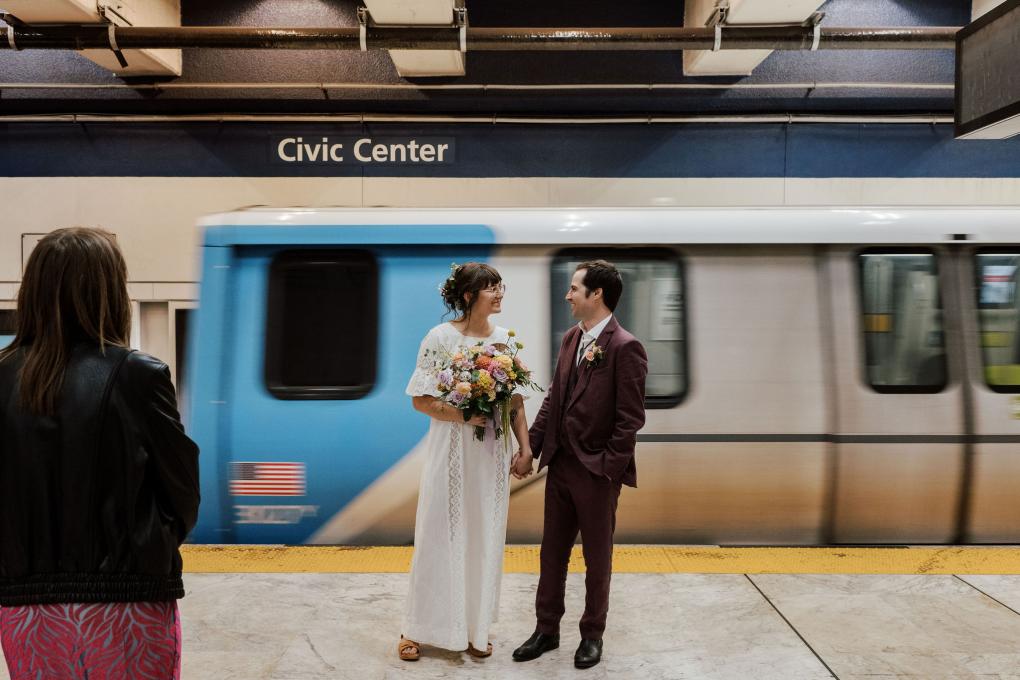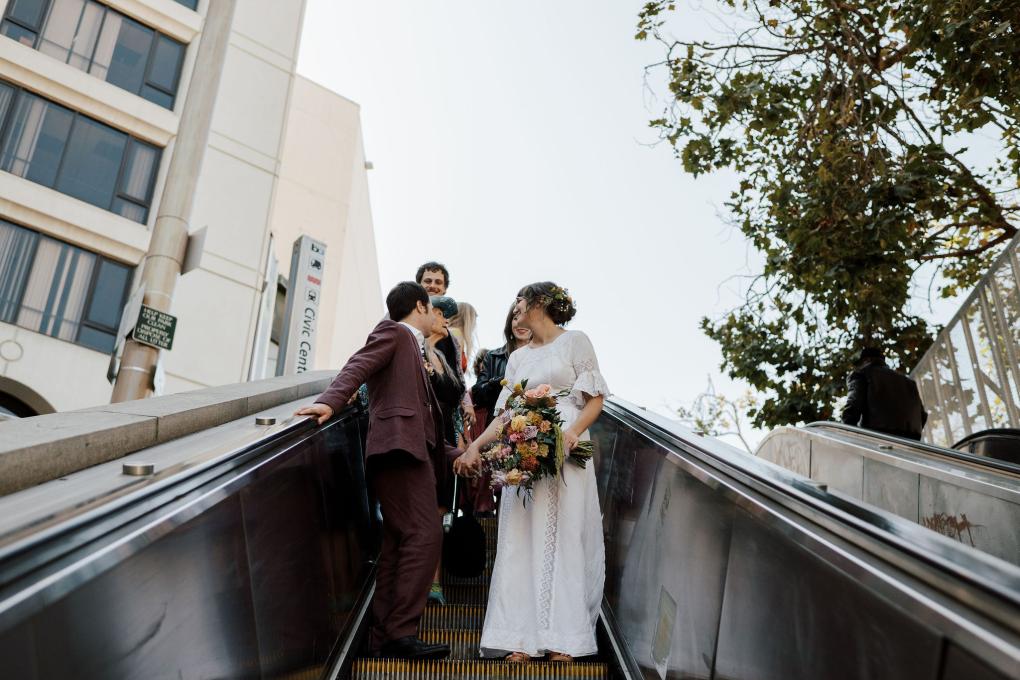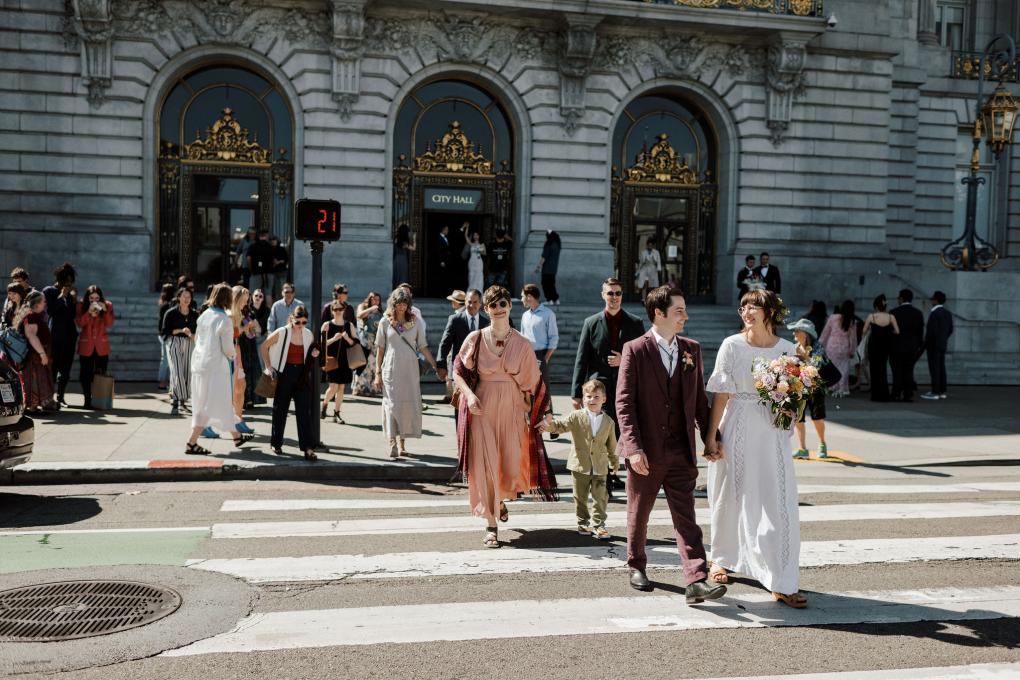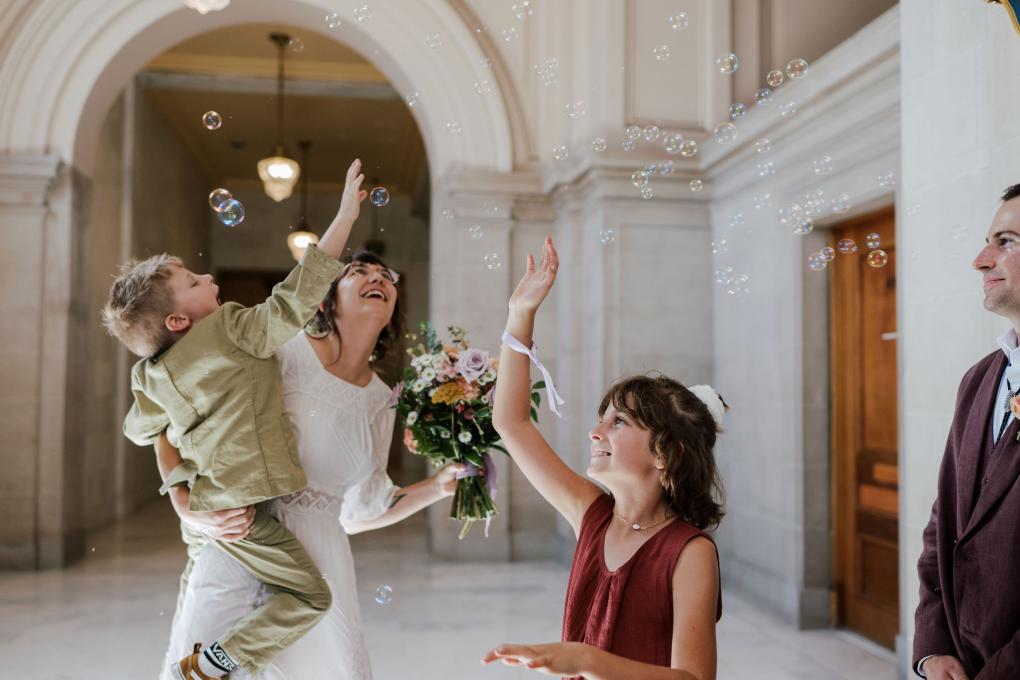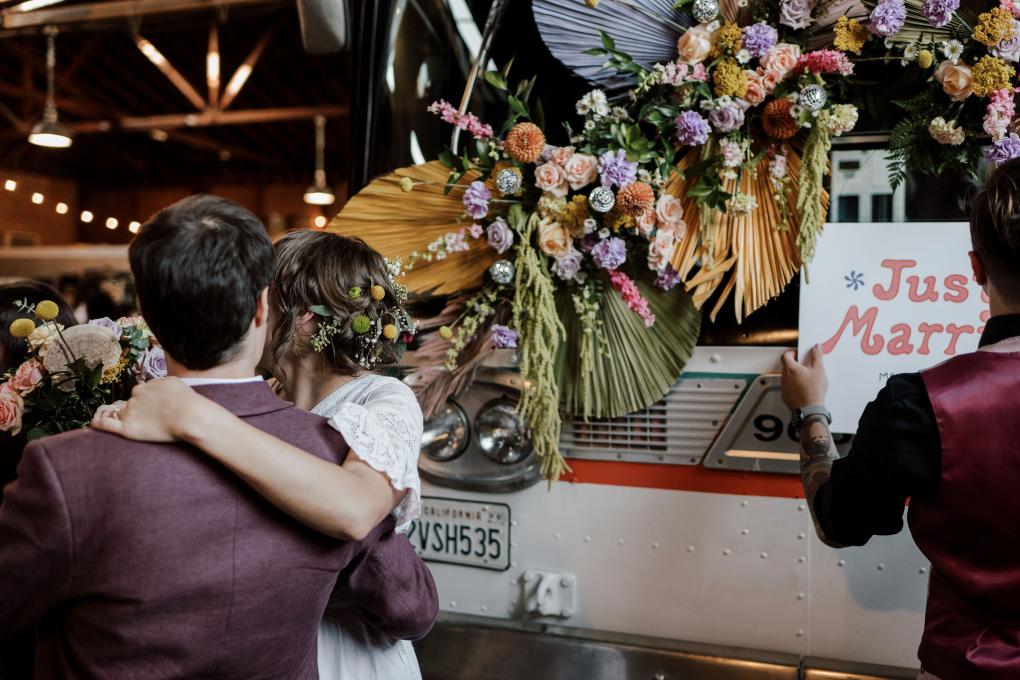Search Results
BART Connects: A transit wedding happened naturally for these newlyweds
Photos courtesy of Anya McInroy Photography.
Do you have a favorite BART memory or story to share? Email a short summary to BART Storyteller Michelle Robertson at [email protected], and she may follow up to schedule an interview.
Mahalia LeClerc and Benjamin Frisbey never set out to have a transit wedding. It just kind of happened that way.
“We were never like, let’s make sure we include BART in the wedding,” said Mahalia. But when she and her now-husband picked the ceremony spot – San Francisco City Hall – and then the party venue – transit-themed Line 51 Brewing Company in Jack London Square – they needed a way to get themselves and their guests from the one place to the other. Public transit simply made sense.
“We value public transit,” Mahalia said. "And though we didn’t plan it that way, our experiences using it naturally led us to having a transit wedding.”
Mahalia and Ben set out from their hotel in Jack London Square for the ceremony on the morning of September 28. It was an unseasonably sunny Thursday, one day before the full moon. They were running late and frazzled (understandably), so at the last minute, they decided to take a rideshare to Civic Center -- “cut that out of the story,” Ben joked. But for their guests, the couple provided directions to the venue that “deprioritized cars and emphasized using public transit.” Some of their family even rode Capitol Corridor down from Sacramento, where the couple now lives, for the occasion.
When Mahalia and Ben arrived at City Hall that morning, they queued with dozens of other soon-to-be-wed couples. Mahalia said it was like a “DMV line of brides”; there were brides outside, brides on the stairs, brides in pantsuits, brides in gowns and veils and gloves. All kinds of brides. And they were all jockeying for the best photo spots.
Mahalia and Ben were lucky to snag the most coveted ceremony spot – under the rotunda at the top of the stairs, where the light from the windows casts a golden hue across the marble and stone of the enchanting Beaux-Arts building. An added surprise: The presiding judge waived the five-guest limit and invited all of the couple’s guests waiting outside to gather under the dome for the short ceremony. A friend blowing bubbles lent the scene an extra dash of whimsy.
After posing for photos, the newlyweds and their guests set out for Civic Center BART station (about a three-minute walk from city hall). They traipsed through the plaza pathway framed with knobby sycamore trees and hopped on the nearest escalator. On the concourse, Mahalia and Ben taught their guests how to get Clipper cards, and then they descended to the platform to catch a train for Embarcadero.
The station proved a ripe setting for photos. The images were not your run-of-the-mill wedding portraits. They showed Mahalia and Ben on the escalator, walking through the fare gates, on the platform as a train whooshed by. The photographer, Anya McInroy, is Bay Area born and bred. She said the opportunity to snap photos of the newlyweds around BART was “all an Oakland kid could ever dream of!”
“I have taken many images on BART over the decades, but this was my first wedding on BART, and hopefully not my last,” she said.
On the train, Mahalia and Ben said fellow passengers hardly batted an eye at them, despite the bride’s distinct white dress and the groom's suit (with a bolo in place of a bowtie).
“We got some looks for sure,” Mahalia said. “It was part of the fun.”
When they were coming up the escalator at Embarcadero Station, a street photographer brushed past, snapped a photo, and complimented their outfits before continuing on his way. People on the street and in their cars hooted, hollered, and honked. A woman in the crosswalk leading to the Ferry Building told the couple she was married just the week before.
The SF Bay Ferry that carried them to Jack London Square zipped across the churning bay. The sky was blue and cloudless. Had the wedding taken place a day later, the party on the deck would have been drenched by a rainstorm. "We kept joking that we got to take a yacht to our reception,” Ben said.
After the 35-minute ferry ride, the couple had some downtime at their hotel. From their room, they could see the boats coming in and out of the port. Then, it was time to party. Line 51 Brewery is named after the line the owner used to ride. The venue houses a real AC Transit bus from the 70s, which served as the backdrop for many a photo. Friends affixed flowers and a “Just Married” sign to its front windows.
Reflecting on the day some months later, Ben and Mahalia said the whole thing “felt very us.” All the transit riding led to some of their guests remarking, “You’re so adventurous and brave for doing that!”
“It didn’t feel out there to us,” Ben said.
Months earlier, the couple had booked Stern Grove for their wedding, but once they started digging into the planning of it, they got cold feet.
“It became a really big thing really fast,” Ben said. “So we canceled it and went back to the drawing board.” That winter, a tree fell on the Stern Grove Clubhouse. Luck, it turned out, was on their side all the way through.
During their interview with BART Communications (the interviewer herself took BART to and from her San Francisco City Hall wedding two years earlier), Ben and Mahalia began realizing how the unintentional transit theme actually made a lot of sense for their wedding.
The couple met as students at San Francisco State 12 years earlier. Before moving to Sacramento, they used public transportation as much as possible, taking Muni when they lived in the Outer Sunset District and BART when they lived near Ashby Station.
“We were so close to the line in Berkeley, you could actually see the trains go by from our window,” Mahalia said.
Ben commuted to his office in San Francisco with BART, and he said they often took the train into the city for dinner and nights out.
When the couple moved to Sacramento in 2021 for work, they quickly realized how much they missed BART and “great public transit that is so easy to use.”
“The frequency the trains come, the timed transfers, it’s all really great,” Mahalia said.
As she spoke, Mahalia began flashing back to her youth. She grew up in largely rural towns around Northern California, including Redding and Nevada City, and “couldn’t wait to get out.”
“In high school when I learned how to drive, I really didn’t like it,” she said. “I told people I was going to move to San Francisco for college so I wouldn’t have to use a car anymore.”
Ben grew up in Santa Cruz and rode his bike pretty much everywhere until he went off to college. He only took BART a few times, for class field trips and once, an Oakland A’s game with his grandpa.
“I didn’t have much public transit experience,” he said. “And then when I moved to the city, it became ingrained in my life.”
“We live in cities because we like to interact with people,” Mahalia added. “When you’re in a car, you don’t have those interactions. You might pass the same person every day and not even notice it. Transit fits into our values. You start to notice the same people on the train, and in noticing, you care more about the strangers in your community.”
About the BART Connects Storytelling Series
The BART Connects storytelling series was launched in 2023 to showcase the real people who ride and rely on BART and illustrate the manifold ways the system affects their lives. You can follow the ongoing series at bart.gov/news.
The series grew out of BART's Role in the Region Study, which demonstrates BART’s importance to the Bay Area’s mobility, cultural diversity, environmental and economic sustainability. We conducted a call for stories to hear from our riders and understand what BART means to them. The call was publicized on our website, social media, email blasts, and flyering at stations. More than 300 riders responded, and a selection of respondents who opted-in were interviewed for the BART Connects series.
Pilot program will allow bikes on BART all day on Fridays in August
Starting Aug. 3, give your feedback using the short survey at bart.gov/bikes BART will launch a pilot program to allow bicycles on board trains all day long on Fridays in August. The idea is to see how allowing bikes on trains all day, including rush hour, will affect passengers and train operations. This
BART's Safe & Clean Plan is transforming the rider experience

As the Bay Area’s backbone public transit system, BART is rolling up its sleeves to make sure riders feel safe, to keep our trains cleaner than ever, and to provide the best service yet – from departure to destination.
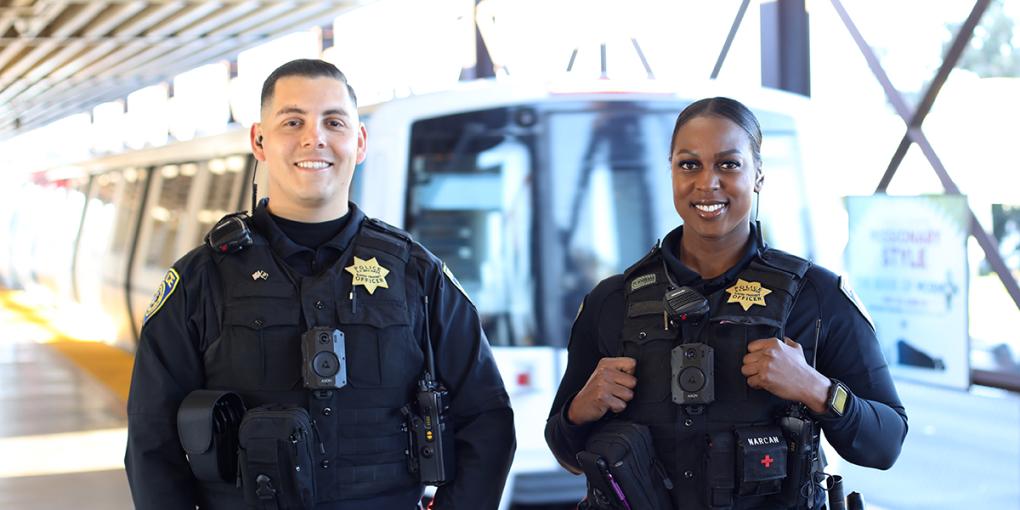
Commitment to Safety & Security
- Ensuring BART Police are riding trains more, increasing their visibility, and keeping riders safe by doubling officer presence systemwide.
- Average response time is down to 4 minutes.
- Increased patrols are yielding results by deterring crime and quickly apprehending perpetrators when incidents occur.
- Progressive policing approach uses unarmed Crisis Intervention Specialists, Ambassadors and Fare Inspectors for additional patrols with experts in de-escalation.
- 7% of calls have been diverted from police to an employee with training in social work.
- Recruiting for all vacant officer positions and adding 19 additional officer positions once vacancies filled.
- Making trains even safer by running shorter trains to increase the number of people in each car.
- Maintaining 4,000+ surveillance cameras to minimize response time and hold suspects accountable.
- LED lighting installed on platforms and in parking facilities to eliminate dark corners.
- Conducting welfare checks for the unhoused and enforcing no drug use or smoking.

Commitment to New Fare Gates
- Taller, stronger fare gates to deter fare evasion are being installed.
- Pilot fare gates installed at West Oakland Station.
- Complete installation of 700+ new fare gates systemwide by the end of 2025.
- Fare gates added to enclose elevators to further reduce fare evasion.
Commitment to a Clean Ride
- Doubling the rate of deep cleaning on train cars.
- Retired all old trains, only new trains are in service.
- Adding nearly 66% more dedicated crews working to keep stations clean.
- Staffing restrooms at high-volume stations with attendants to guarantee cleanliness and safety.
Adapting Service to Attract New Riders
- New train schedule increases emphasis on ridership growth opportunities and relies less on outdated commuting models.
- Increased service on nights and weekends, eliminates 30-minute wait times.
- Improved scheduled transfers.
- Service on BART’s busiest weekday line, the Yellow Line, increases trains to every 10 minutes from Pittsburg/Bay Point to get drivers off congested highways 4, 680, & 24.
- New schedule improves reliability and better serves SFO and OAK.
Canceled trips nearly eliminated.
Increased Clipper START fare discount for low-income riders to 50%.
Offering Clipper BayPass, where employers purchase all-you-can-ride transit passes for employees.
Making it Easy to Explore Attractions Near BART
- Visit our BARTable section for:
- Eats and drinks near BART
- Bike adventures accessible by BART
- Lists of museums and places to shop near BART
- Lists of weekend activities near BART
- Contests and deals from BARTable partners
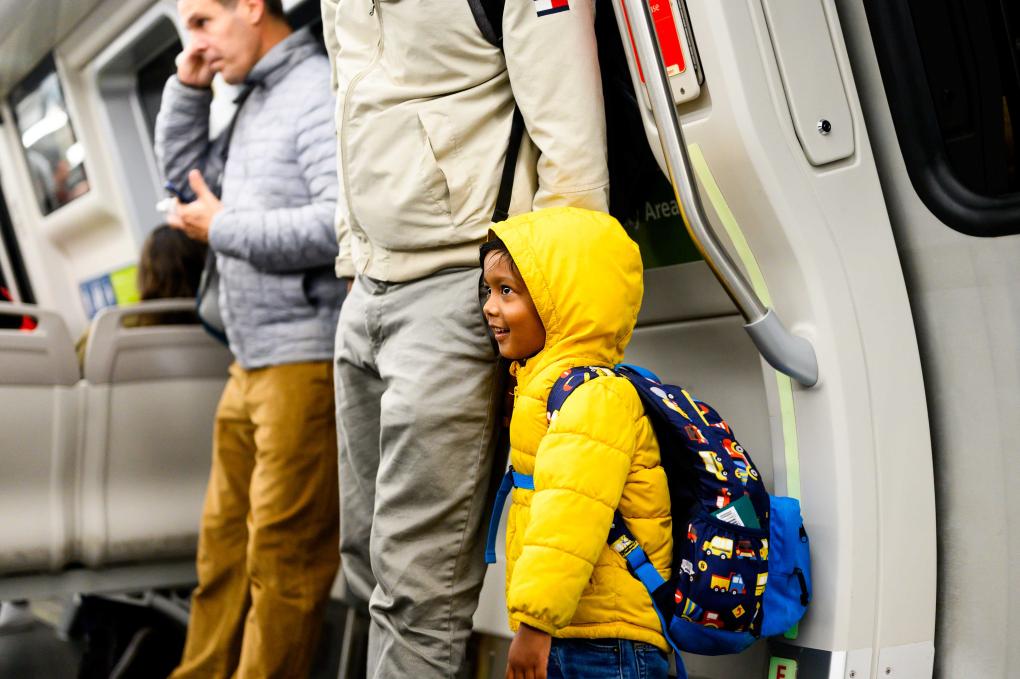
BART’s General Manager Bob Powers welcomes you back on board:
“If you haven’t tried BART in the last few months, I encourage you to ditch your car for the day. We’ve made many improvements. From easy app-based payment to new escalators at our busy downtown stations, we’re proud of the improvements we are making every day. Most importantly, we’ve made a commitment to a cleaner, safer ride that guarantees BART remains the safest way to travel.”
BART expands wireless network to underground stations in downtown Oakland
By now you’ve probably noticed that your mobile phone gets a signal in our underground stations in Downtown Oakland. We recently installed the equipment to eliminate the "mobile phone dead zone" at 19th Street, 12th Street/Oakland City Center and Lake Merritt stations along with all the tunnels in between
Thank you from the Safe Trips to BART Team
BART website will go offline from Midnight to 2 a.m. on December 10
The BART website ( www.bart.gov) will be offline from Midnight to 2 a.m. on Monday, December 10, as a necessary step to deploy a newly redesigned version of the website. BART plans to launch a redesigned, mobile-responsive bart.gov website following the downtime. During the 2-hour downtime, BART’s website
BART's Aileen Hernandez is working to increase access and opportunity
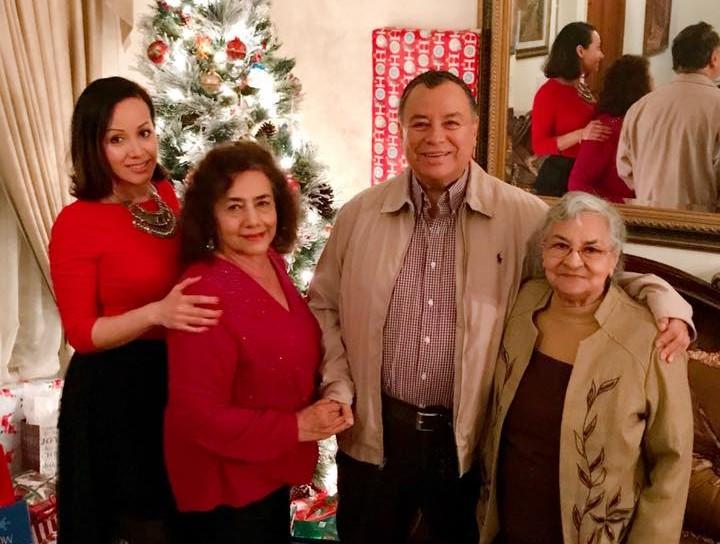
Aileen Hernandez with her mother, father, and grandmother.
This Hispanic Heritage Month, BART is proud to celebrate employees with Hispanic and Latino heritage, who enrich our organization and the community at large. Over 15% of BART's workforce identifies as Hispanic and Latino, and we will be celebrating them throughout the month with stories and internal gatherings. Read our first profile, of BART's new Director of the Office of Civil Rights, Rudy Garza, here.
Hispanic Heritage Month runs from Sept. 15 to Oct. 15.
After Aileen Hernandez’s parents came to the United States from Colombia in 1968, they moved around a lot – Philadelphia, Los Angeles, Sacramento, and finally the Bay Area, where Aileen was born.
When she talks about her parents’ journey in search of better jobs and opportunities, Hernandez doesn’t just think about them, she thinks about the constellation of people surrounding them.
“My parents didn’t do it all alone. People were helping them,” she said. “That’s something I want to continue because I've been blessed by being a receiver of that help through many great mentors in my educational and professional life.”
Hernandez is the BART Interim Manager for Grants & Funding Advocacy Division, Funding Strategy Department. She has spent her career — in Sacramento, New York, and Bay Area— running complex programs to ensure the ladder of opportunity extends to those who need it most.
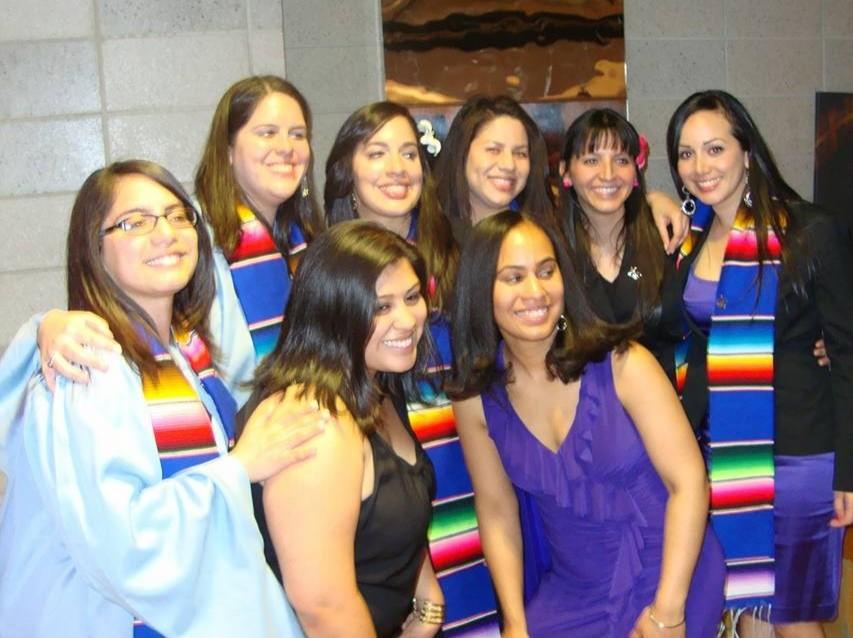
Aileen at her Columbia University graduation in 2010.
Her past work connected first-generation community college students to four-year universities, given military veterans access to job training, expanded workforce development services in San Francisco, and ensured BART provides opportunities for small businesses and Disadvantaged Business Enterprises (DBEs) to get access to construction contracts.
In her current role, Hernandez makes sure BART has access to local, state, and federal funds. Recently, Hernandez and her team navigated and implemented the complex funding strategy for BART’s new fare gates.
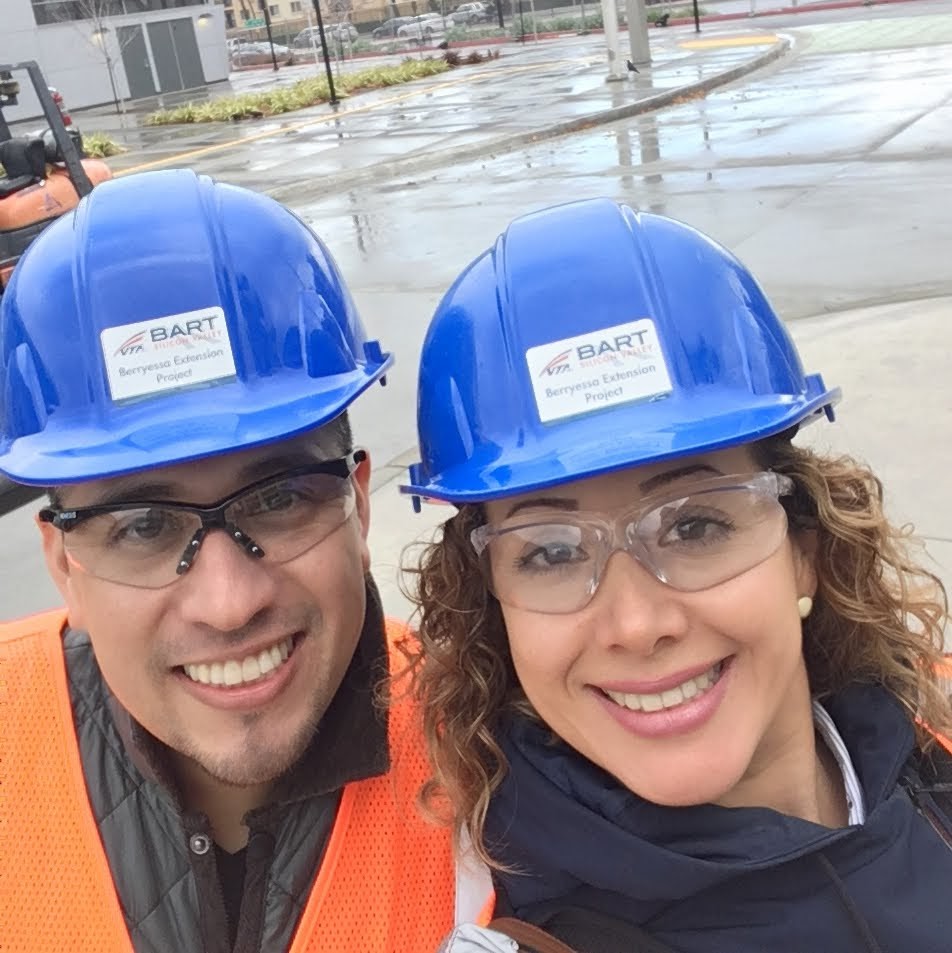
“I really enjoy my work because I know that every dollar we bring to BART is going to have an impact and create a better system for our customers,” she said. “And those customers are real people. It’s our moms, grandparents, tourists, and people with disabilities.”
Hernandez is all about finding ways to uplift Latinos, and for her, Hispanic Heritage Month is an opportunity to educate others about the rich tapestry of Latino culture and expand how people think about who makes up the community.
“It's an important time to promote and educate people about Latino culture and their contributions to the U.S.,” she said. She is especially passionate about bringing attention to the communities that do not get as much representation in the media or the corridors of power.
“I think there's a huge lack of education about the history of Central America and South America,” she said. “Not everyone knows the about the colonization of America, migrations across the continent, and the reasons why people migrated to California and or why they never left.”
Hernandez grew up in the Bay Area, but her family returned to Colombia for a spell before moving back to the U.S. when she was 12. She went to Chabot College to obtain an associate’s degree and UC Davis for her bachelors. Along the way she participated in student government and ran cross country before going to work for California Community Colleges in Sacramento.

Aileen and rest of the Chabot College Women’s cross-country team in 1998.
After a spell in the workforce, Hernandez enrolled in a social work program at Columbia University. She stayed in New York after graduation, training workers for jobs in transportation and launching a veteran's career center before her work brought her back to the Bay Area. But her time in New York had a long-lasting impact on her.
In New York City, Hernandez was exposed to a vibrant hub of Colombian and Colombian American culture. New York has the second-highest concentration of Colombian Americans in the United States after Florida. Hernandez often found it difficult to see her Colombian culture reflected in California, where Mexican American culture is more prevalent.
“You don't see yourself in movies or shows,” she said. “In California, people always assume you're Mexican. So you have to explain that you're not Mexican, and how you're different, and why you're different.”

Aileen with her mother, aunt, and cousins in Medellín, Colombia, in 2023.
In New York, she helped form a foundation to fundraise money for high school students of Colombian descent going to college. The group brought together doctors, lawyers, journalists, and fashion designers of Colombian descent to inspire youth and expand their conceptions of their futures. She continues that work to this day.
Hernandez and her colleagues have recently started a new affinity group at BART called ¡Vamos! for BART employees who identity as Latino, Latinx, Latina, Chicano, and Chicana. ¡Vamos! will work to promote cultural awareness and highlight the community’s efforts and contributions to BART and the Bay Area.
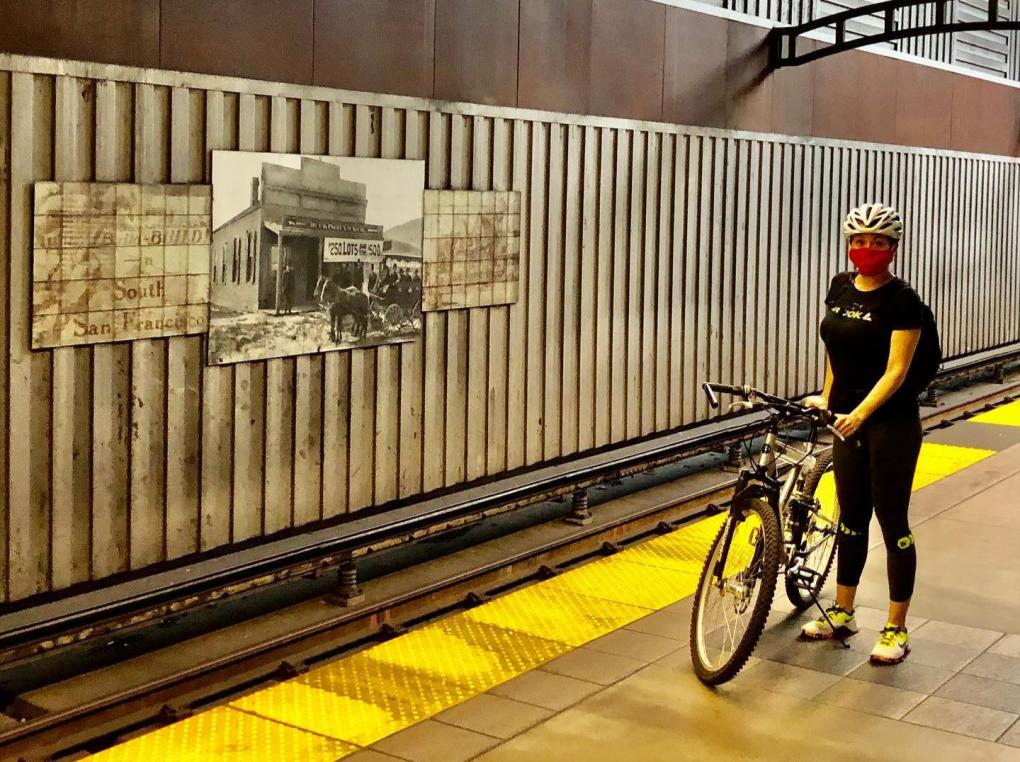
Aileen taking BART with her bike in 2020.
Governor signs bill into law authorizing citizen oversight of BART Police
Marks major milestone for BART Police BART and the Bay Area Community are marking a major milestone in improvement of the BART Police Department with the newly-signed law authorizing citizen oversight of the transit agency’s police department. California Governor Arnold Schwarzenegger has signed into law AB
BART adds e-scooters to Trip Planner to enhance ease of travel
BART is making it easier than ever to take car-free trips by adding shared electric scooters (e-scooters) to BART’s multi-modal Trip Planner. Trip Planner results on BART’s website and app now show real time availability of Spin scooters in San Francisco, LINK by Superpedestrian scooters in Oakland, and HOPR
Unions' questionable "savings plan" fails to address current BART deficit
A questionable proposal by BART unions to save a purported $760 million in costs over the next 25 years is not allowed under current state law and fails to address the immediate fiscal crisis BART faces. Additionally, a professional analysis shows the concept could actually end up costing BART money. "This
